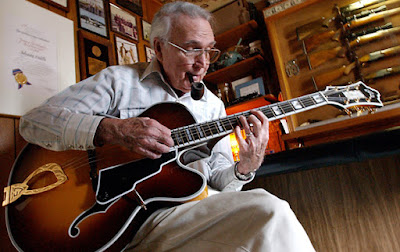Antonio Lardera (born 30 June 1936), better known by his stage name Tony Dallara, is an Italian former singer, actor and television personality who was one of Italy's top vocalists of the late '50s and early '60s.
 Dallara was born the last of five children in Campobassoto
to a family devoted to music. His father Battista in the past was a Chorister
at La Scala. Raised in Milan, after the compulsory
schooling, he held various jobs including a bartender,
clerk, blacksmith, machine washer and a gas station attendant, but with his burning
passion for music he joined the Rocky Mountains band where his singing style
was inspired by American singers such as Frankie Laine and Tony Williams.
Dallara was born the last of five children in Campobassoto
to a family devoted to music. His father Battista in the past was a Chorister
at La Scala. Raised in Milan, after the compulsory
schooling, he held various jobs including a bartender,
clerk, blacksmith, machine washer and a gas station attendant, but with his burning
passion for music he joined the Rocky Mountains band where his singing style
was inspired by American singers such as Frankie Laine and Tony Williams.
In 1957, whilst working as a delivery man he was signed to
the Italian record label Music. His first single "Come prima",
although refused for admission to the Sanremo Festival, was published in
December 1957 and sold 300,000 copies, becoming the biggest selling single in Italy up to that point. The title became a worldwide hit and is still an evergreen today. Further successes followed with "Ti dirò", "Brivido blu" and "Julia".
December 1957 and sold 300,000 copies, becoming the biggest selling single in Italy up to that point. The title became a worldwide hit and is still an evergreen today. Further successes followed with "Ti dirò", "Brivido blu" and "Julia".
The highlight of his career was the victory at the San
Remo Festival 1960 with the song "Romantica." With "La
novia" he succeeded in 1961 again a bigger success. With the title
"Bambina, bambina" he won the song competition
"Canzonissima" in 1961
 |
| Dallara with Jane Russell |
As well as singing, Dallara appeared in six films between
1958 and 1963. From the mid-sixties, Tony Dallara reduced his public
appearances, dedicating himself to a more melodic song genre and some forays
into the Neapolitan song. Among the participations of these years: Un Disco per
L'estate (1964), Cantagiro (1966),
Festival della Canzone Napoletana (1967). By now the musical tastes of
the public had shifted and, while still continuing to record new songs
throughout the sixties, Dallara is no longer able to enter the charts: even
television and radio, slowly, forget about him.
 In the seventies, after a last participation in " A
record for summer 1972 " with Mister Love (which was excluded from the
final phase of the competition), he retired from the world of music and devoted
himself to painting, exhibiting his paintings in various galleries and winning
Renato Guttuso's friendship and esteem. .
In the seventies, after a last participation in " A
record for summer 1972 " with Mister Love (which was excluded from the
final phase of the competition), he retired from the world of music and devoted
himself to painting, exhibiting his paintings in various galleries and winning
Renato Guttuso's friendship and esteem. .
During the early 80’s Dallara started singing his old
hits at concerts again due to a revival of the music from the sixties. He mainly
performed in the summer months performing his songs
with new arrangements. The 1990s also passed, with various television appearances in programs dedicated to the legendary 1960s. In 1991 he issued an album of twelve new songs entitled "Pensieri in Musica" which he co-authored on several tracks. In 1995 he sang in the Zecchino d'Oro. In April 2001 the President of the Republic, Carlo Azeglio Ciampi, appointed him Knight of Merit of the Italian Republic.
with new arrangements. The 1990s also passed, with various television appearances in programs dedicated to the legendary 1960s. In 1991 he issued an album of twelve new songs entitled "Pensieri in Musica" which he co-authored on several tracks. In 1995 he sang in the Zecchino d'Oro. In April 2001 the President of the Republic, Carlo Azeglio Ciampi, appointed him Knight of Merit of the Italian Republic.
In the first months of 2008, Dallara played the role of
television commentator on L'Italia sul 2 on Rai 2 and later participated in the theatrical tour of Teo
Teocoli with the show Dal derby al Nuovo . He also appeared at the selections
of the Sanremo Festival 2008 with Teo Teocoli, but their song Cartà d'identita was
not admitted.
Throughout his career he has sung in many languages
including Japanese, Spanish, German, Greek, French and Turkish, winning prizes
in many foreign countries. In his later years he could still be seen on Italian
television from time to time. (Painstakingly edited from Wikipedia and various
blog translations)
















































